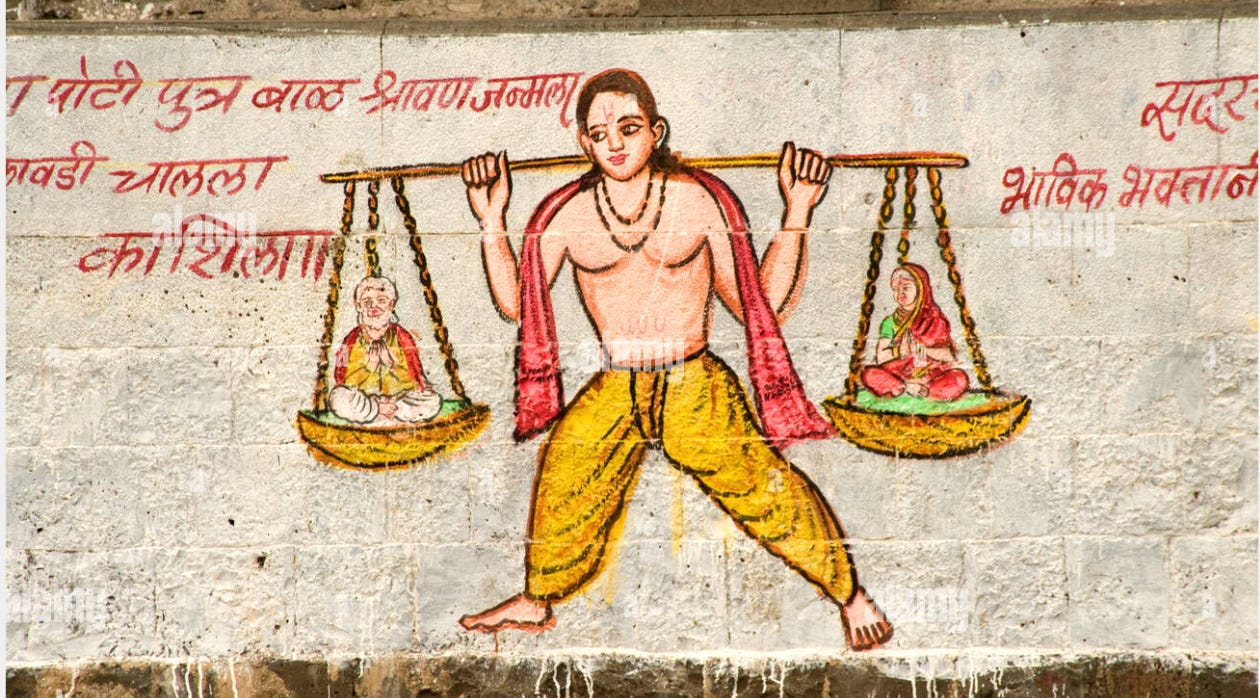Shravana, “The Star of Learning and Devotion”
The upcoming new moon on January 29, 2025 will be in this nakshatra. What is Shravana about?
Every month, we have a full and a new moon and each of these moons will happen in a nakshatra, or star cluster, in the Vedic astrological system.
On Wednesday, January 29, 2025, there will be a new moon at 15 degrees of Shravana, the 22nd nakshatra of the sidereal zodiac.
Nakshatras are the 27 “lunar mansions” of the sky, and are a central part of Vedic astrology. Astronomically, they are clusters of stars within the larger, more typically recognized constellations and signs. For example, the sign Aries contains the nakshatras Ashwini, Bharani, and Krittika. Mythologically, they are the 27 “wives” of the Moon, and the Moon “visits” each of them every month. One of the reasons nakshatras are so important to Jyotish is they set up the Mahadashas, or karmic timing, of a person’s life.
Each nakshatra has a planetary ruler, a god or deity that presides over it, karmic aims (artha, kama, moksha, dharma), symbols associated with its meaning, and so forth. When thinking about your chart, the nakshatras your planets are in will have key thematic influences in your life.
The nakshatra Shravana is ruled by the Moon and by the god Vishnu, one of the major deities of the Hindu triumvirate. Vishnu is the Preserver, the Protector of the universal order. One of Vishnu’s avatars, Krishna, appears in one of the most important pieces of Hindu scripture, the “Bhagavad Gita.” He descends to counsel Arjuna, a warrior having a crisis of conscience and reluctant to engage in a raging war tearing through his country. Vishnu instructs Arjuna that, as a warrior, it is dharma, or duty, to fight, and he must follow through. Note how Krishna appears in this epic during a time of war. This is Vishnu’s role—to remind us of moral and cosmic order during times when humanity has lost its way.
Shravana is made up of three stars of the constellation Aquila, which means “eagle” in Latin. These three stars make up the eagle’s head. In Vedic cosmology, they are the three footprints of Vishnu.
Symbolically, Shravana is represented by the ear. Shravana has an association with hearing, or listening. Derived from the Sanskrit word “sru,” which means to “hear,” the hearing that Shravana is associated with is not just any hearing, but “sruti,” or “divine hearing.” Sharvana possesses an ability to hear the sounds from the etheric realms. For example, an aptitude for hearing the divine “OM” can be experienced here.
Because of this, Shravana has an association with oral traditions or the passing of wisdom between a guru and disciple. Some ephemeral nature of wisdom is passed through the sound of the guru’s speech and the disciple’s ability to “hear” it. The Vedas themselves are related to Shravana since they are an example of this type of wisdom—the Vedas are hymns and are meant to be heard; they’re meant for the initiated who can hear the “wisdom” behind their mellifluous sounds.
Individuals who have prominent planets or placements in their chart in Shravana will have a strong desire for learning and solitude. They are “lifelong learners.” These are the folks who “need” time in solitude for reading and reflection. They make great teachers and writers as a result. They have an aptitude for listening (or find themselves developing it in this lifetime) and will be attracted to music. But the real sound they’re after are divine sounds, the sounds of the ether which are heard through silence. Shravana, for example, is associated with the pipal tree where Buddha received enlightenment through inner listening.
Shravana individuals can experience a lot of disillusionment with life early on, and as a result, spend their lives working towards artha, or material prosperity, to feel secure. This is also because of the Capricorn influence, the sign in which this nakshatra sits. Once they reach financial freedom, however, which usually occurs by mid-life, they can direct their efforts towards their learning and spiritual pursuits. Also called the “lame one,” or “the one who limps,” Shravana individuals can experience limping, or have a strange gait.
Shravana individuals also tend to have a strong sense of duty and devotion to their parents. In the Sanskrit epic Ramayana, Shravan Kumar, a fifteen-year-old boy, carries his blind parents to holy sites by balancing two baskets on either end of a bamboo stick.
(Photo credit: Dinodia Photos, 2009.)
Here is the devoted Shravan, carrying his aged, blind parents on their holy pilgrimages.




